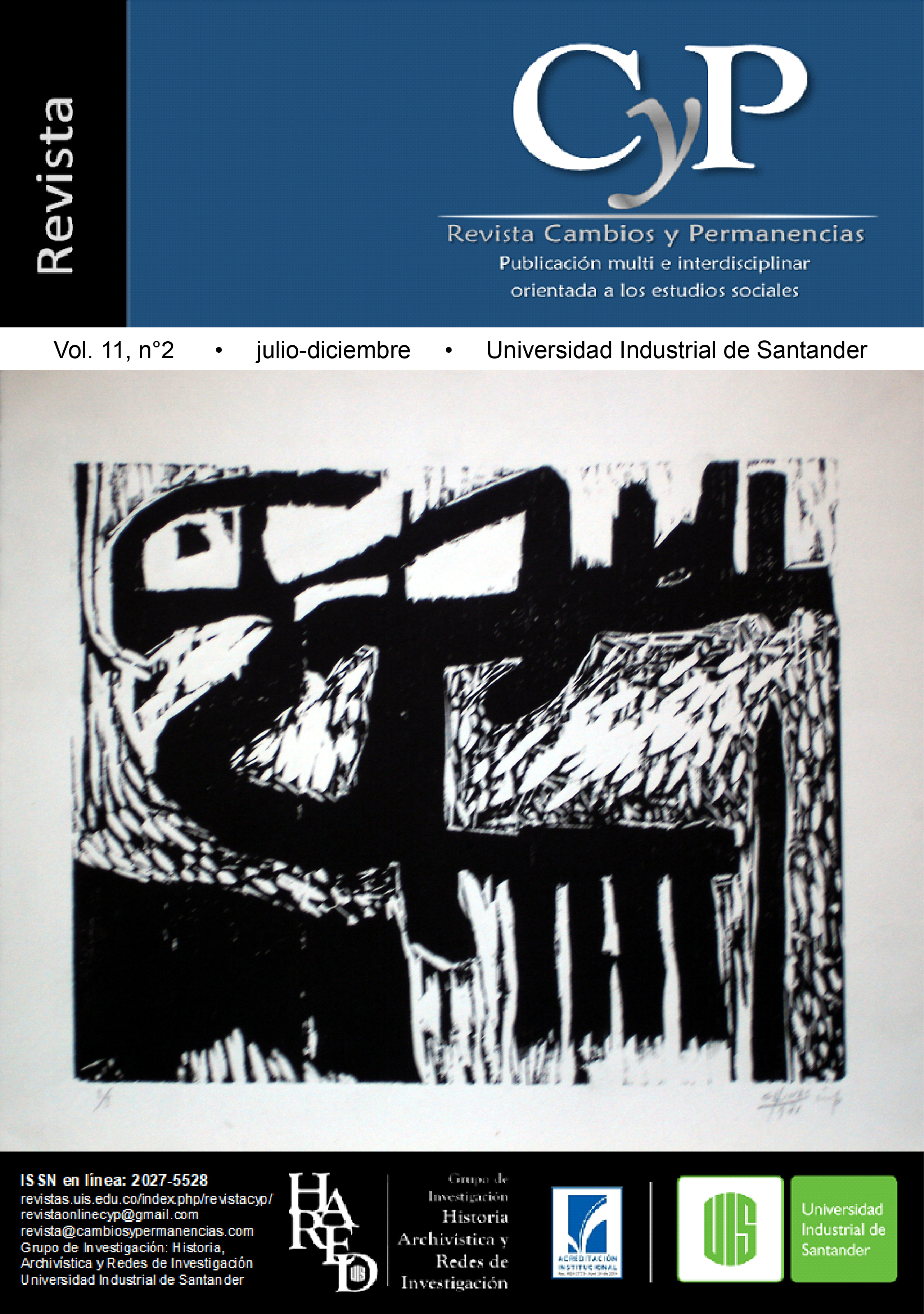Let’s look at the traces of our neighborhood! Pioneer teens toward Yomasa’s historic reconstruction (1974-2018)
Published 2020-12-16
Keywords
- oral history,
- neighborhood Yomasa,
- Usme,
- Bogotá
How to Cite
Abstract
This project aims to reconstruct the history of Yomasa neighborhood, located in the fifth locality (Usme) of the Bogota city, from the school environment. The authors are adolescents aged 14, 15 and 16, respectively. They are currently studying at the Federico García Lorca School, a public education institution where they carry out their research within the framework of the Social Sciences subject.
The intention is not to make a professional or highly conceptual historiography with this project, due to the school nature of the same, but to consolidate a product that responds to their interests as inhabitants of sector. This has led them to carry out interviews with some of their neighbors, among whom are founders and old inhabitants of the neighborhood. Thus, the oral sources have been subjected to a process of contrast with photographs, models, maps, mental maps, press, among other materials that serve for academic reflection of the proposal.
The researchers, despite their youth, express in this work the intention to make known the history of their neighborhood at national and international level, because it is something that to date no academic spectrum has deepened and shed light on problems such as obtaining public services in popular areas of city, the constitution of the communal action board, settlement of housing estates and community activities through committees to meet educational, medical, housing and transport needs. Consequently, the school research project enables students to assimilate their historical roles in dialogue with urban phenomena originating during 70’s and 80’s years, which precede their present space-time location in Bogotá, Colombia and the world.
Downloads
References
Ávila, A. (2016). Séptima conferencia de las Farc: de guerrilla a ejército del pueblo. El Espectador. Recuperado de https://www.elespectador.com/noticias/paz/septima-conferencia-de-farc-de-guerrilla-ejercito-del-p-articulo-655755
Daza Pérez, D. del P., Becerra González, F., Castro Bueno, F., y Ortiz Fonseca, J. P. (2011). El barrio Nuevo Chile: una escuela de aprendizaje. En: G. Necoechea Gracia, y A. Torres Montenegro, Caminos de historia y memoria en América Latina (pp. 229-243). Buenos Aires, Argentina: Imago Mundi.
Departamento Técnico Administrativo del Medio Ambiente, Alcaldía Local de Usme (1998). Historia ambiental de la Quebrada Yomasa. Bogotá, Colombia: Alcaldía Mayor de Bogotá.
El cocinol es el combustible de la tragedia. (29 de noviembre de 1993). El Tiempo. Recuperado de https://www.eltiempo.com/archivo/documento/MAM-268712
Fandiño Contreras, A. (2004). Mi papá fundó el barrio Las Amapolas. En: F. Castro Bueno, Historia oral: historias de vida e historias barriales (pp. 110-115). Bogotá, Colombia: Colegio Manuelita Sáenz, Colectivo de Historia Oral.
Grave escasez de combustible. Problemas de orden público por falta de gasolina blanca. (11 de junio de 1972). El Bogotano, p.1.
La miseria en Bogotá: Se toman el centro. 7 familias instalan ranchos de latas y cartón frente a apartamentos de ricos. (24 de enero 1976). El Bogotano, p. 5.
La ruta de la espada. (S. F.). Semana. Recuperado de https://www.semana.com/especiales/articulo/la-ruta-de-la-espada/34708-3
Por el cual se organiza el Distrito Especial de Bogotá, Decreto 3640 del 17 de diciembre de 1954. (1954).
Portillo, L. (2009). Cultura Chibcha. Historia Cultural. Recuperado de https://www.historiacultural.com/2009/06/cultura-chibcha-muisca-ceramica-oro.html
Fuentes orales (entrevistas)
Choque, H. (2018). Bogotá, Colombia.
Gómez Rodríguez, A. M. (17 de diciembre de 2018). Bogotá, Colombia.
Ortiz, A. (14 de diciembre de 2018). Bogotá, Colombia.
Rozo, R. (20 de diciembre de 2018). Bogotá, Colombia.
Sainse, A. B. (2018). Bogotá, Colombia.

